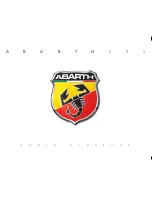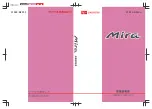
The three way catalytic converter is
in the exhaust system. Through
chemical reactions, it converts HC,
CO, and NOx in the engine’s exhaust
to carbon dioxide (CO ), dinitrogen
(N ), and water vapor.
This system constantly adjusts the
ignition timing, reducing the amount
of HC, CO and NOx produced.
The PGM-FI System uses sequential
multiport fuel injection.
It has three subsystems: Air Intake,
Engine Control, and Fuel Control.
The Engine Control Module (ECM)
or the Powertrain Control Module
(PCM) uses various sensors to
determine how much air is going
into the engine. It then controls how
much fuel to inject under all operat-
ing conditions.
The emissions control systems are
covered by warranties separate from
the rest of your car. Read your
warranty manual for more informa-
tion.
The Onboard Refueling Vapor
Recovery (ORVR) system captures
the fuel vapors during refueling. The
vapors are adsorbed in a canister
filled with activated carbon. While
driving, the fuel vapors are drawn
into the engine and burned off.
The exhaust emissions controls
include three systems: PGM-FI,
Ignition Timing Control and Three
Way Catalytic Converter. These
three systems work together to
control the engine’s combustion and
minimize the amount of HC, CO, and
NOx that comes out the tailpipe. The
exhaust emissions control systems
are separate from the crankcase and
evaporative emissions control
systems.
The emissions control systems are
designed and certified to work to-
gether in reducing emissions to
levels that comply with the Clean Air
Act. To make sure the emissions
remain low, you should use only new
genuine Honda replacement parts or
their equivalent for repairs. Using
lower quality parts may increase the
emissions from your car.
2
2
Replacement Parts
Onboard Ref ueling Vapor
Recovery
Exhaust Emissions Controls
PGM-FI System
Three Way Catalytic Converter
Ignition Timing Control System
Emissions Controls
Technical Inf ormation
295
02/07/09 17:48:54 31S5P620 0298
Main Menu
Table of Contents
▲
▼
















































